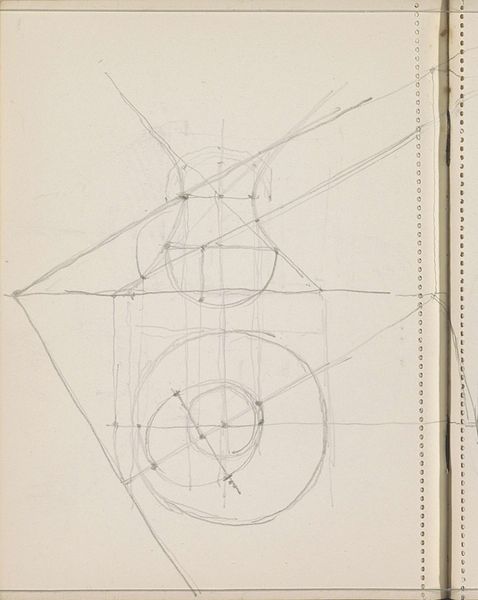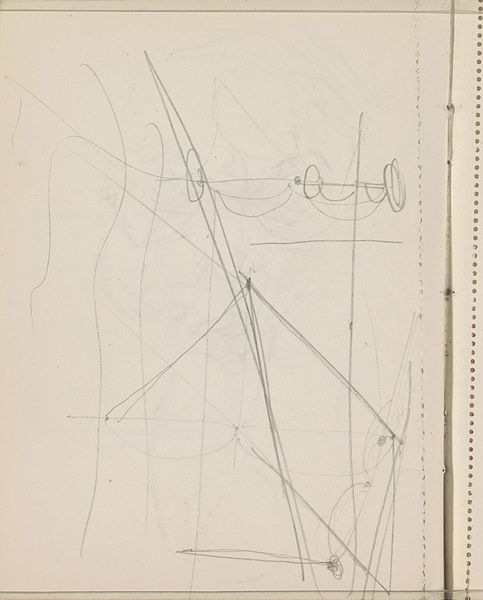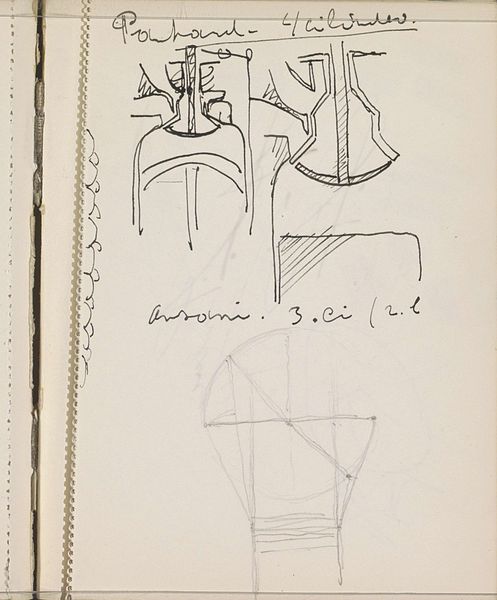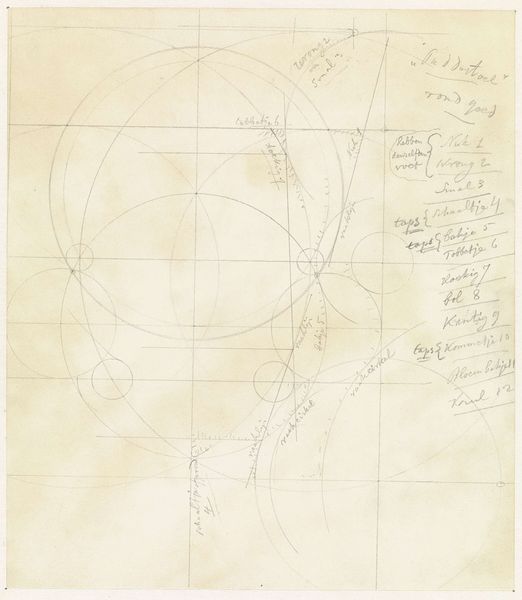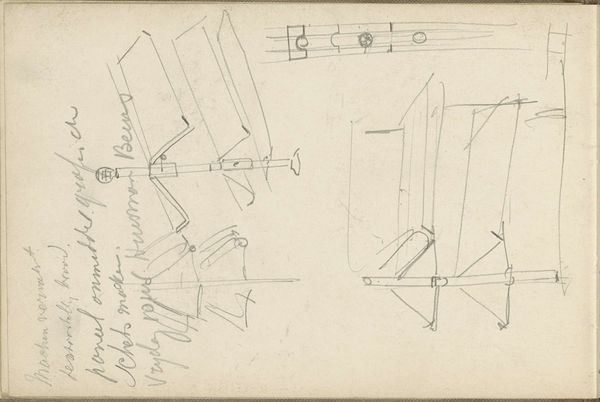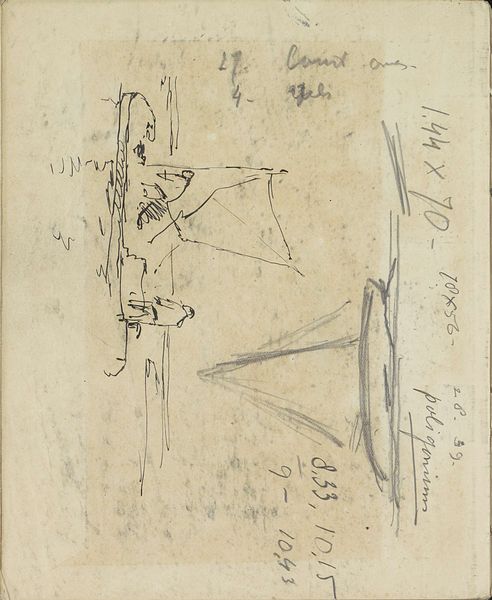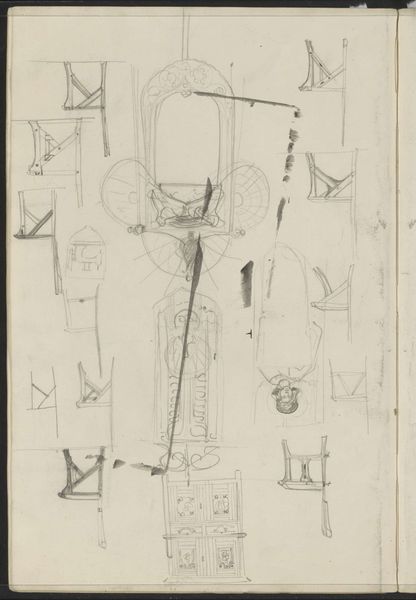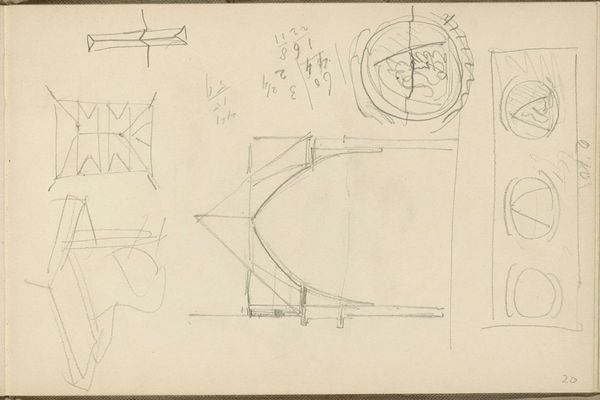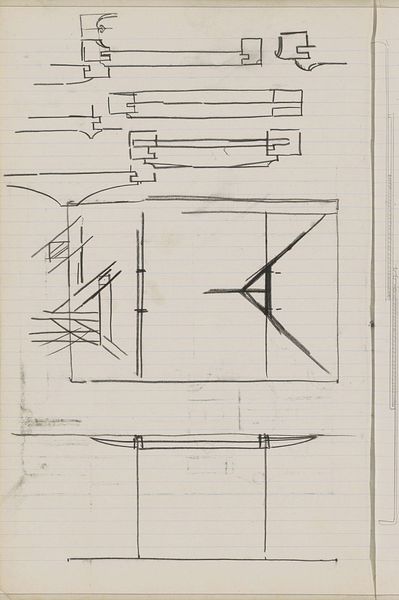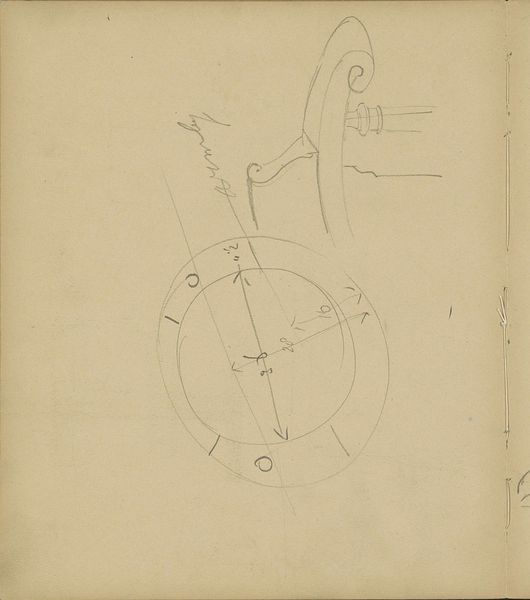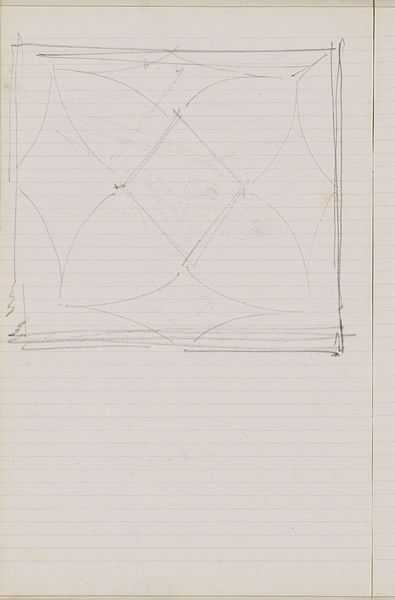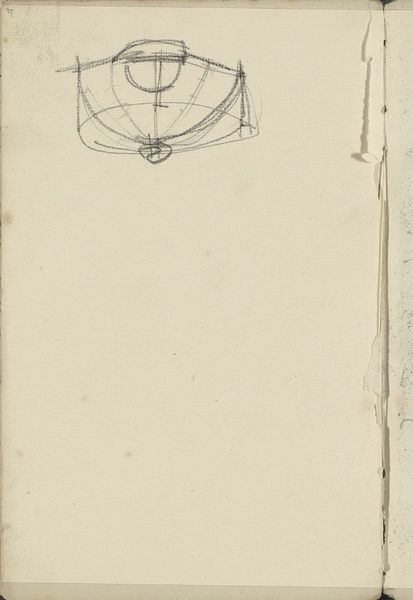
drawing, ink, graphite
#
drawing
#
pen sketch
#
incomplete sketchy
#
hand drawn type
#
form
#
personal sketchbook
#
ink
#
idea generation sketch
#
sketchwork
#
ink drawing experimentation
#
geometric
#
line
#
graphite
#
sketchbook drawing
#
sketchbook art
#
initial sketch
Copyright: Rijks Museum: Open Domain
Curator: This drawing, titled "Round end of a bone," dates back to approximately 1916 and is held at the Rijksmuseum. It's rendered with graphite and ink on paper. What's your immediate impression? Editor: The composition strikes me as inherently clinical and almost fragmented—yet undeniably purposeful. It feels less like a finished piece and more like peering directly into an artist’s working method, seeing how they break down a complex form into simpler, geometric components before building it back up again. Curator: Precisely! Consider the context in which this work appeared. Early 20th-century artists increasingly drew inspiration from science, embracing its analytical approaches. What we’re seeing is potentially part of a larger cultural shift in how artists and institutions approached knowledge itself, influenced by growing interest in anatomy, dissection, and scientific illustration in popular magazines. Editor: Absolutely. And the symbolism, albeit subtly, underscores a very elemental, underlying visual structure, from base geometric components toward anatomical completion. Even though we can see what is labeled an ‘epiphyse,’ or end of the bone, in careful ink strokes, it is placed next to circles in geometric proportion. Even the arrow symbols point both literally, and symbolically, at a basic reductionist approach to human form and knowledge itself. Curator: I think the medium also bears mentioning: the sketchwork. Using ink and graphite reflects an approach where a rough base layer and clean detailing highlight a turn-of-the-century interest in “rationalized form” visible in broader cultural movements like city planning. The “fragmented” feeling may in part represent an intentional deconstruction and then analysis. Editor: The work may feel unfinished because it never aspired toward traditional completion. It seems, instead, that the ultimate value rested on exploring and expressing this relationship itself; the bridge from abstraction to biology. Curator: Ultimately, examining a piece like "Round End of a Bone," helps reveal that even seemingly modest sketches can reflect seismic shifts in cultural consciousness. Editor: It truly reminds us that understanding the symbolic charge within an image allows it to transcend its immediate physical qualities. It offers enduring insights into how we, as viewers, process fundamental truths and connections between ourselves, art, and science.
Comments
No comments
Be the first to comment and join the conversation on the ultimate creative platform.
